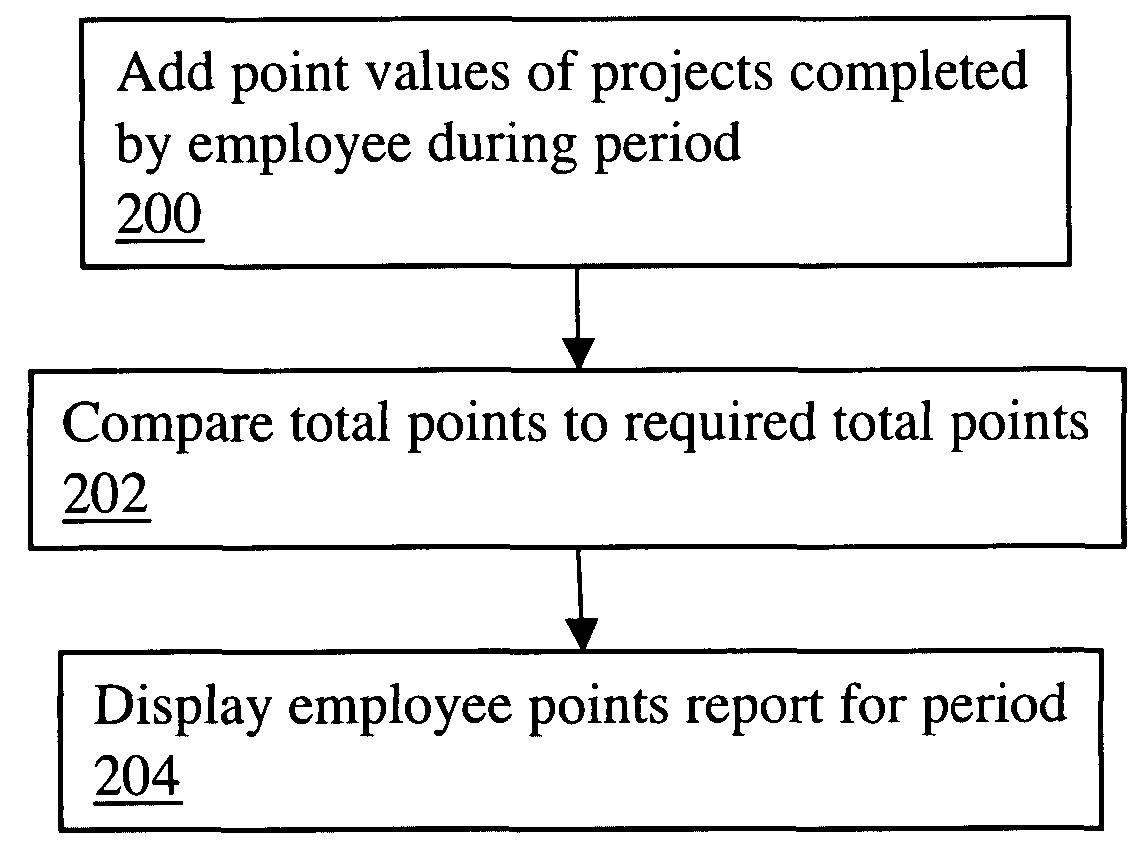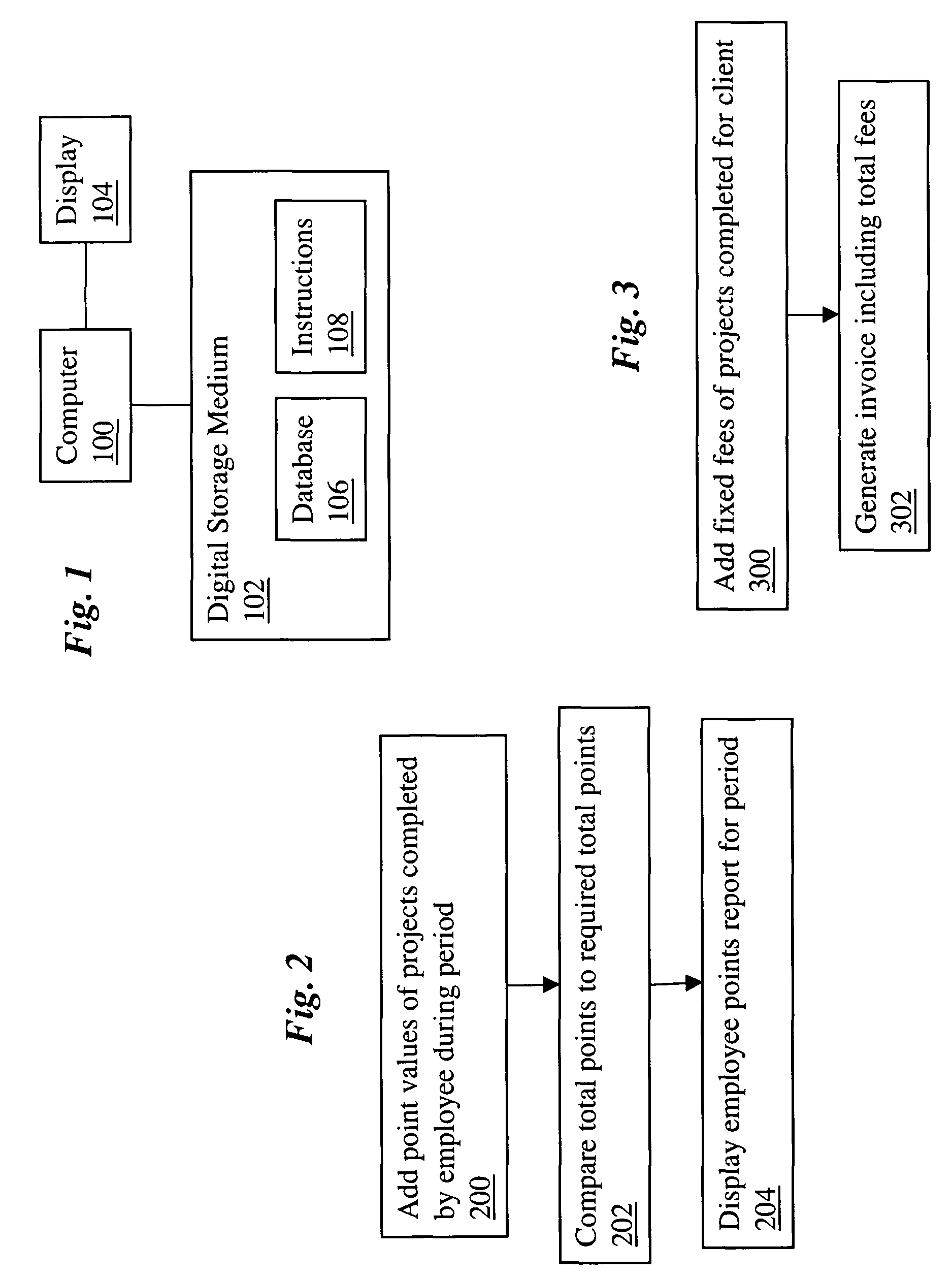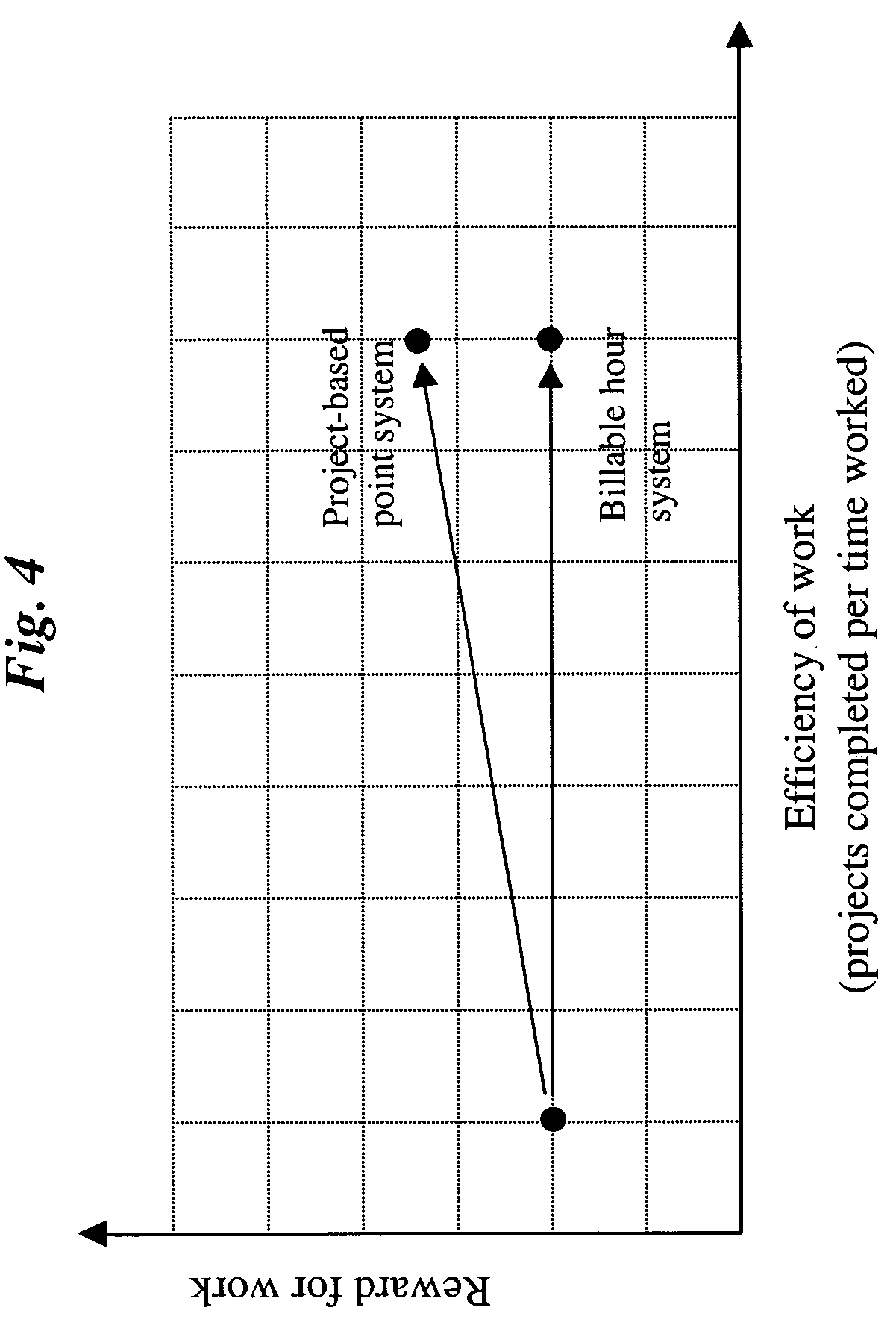Professional service management using project-based point system
a project-based point system and professional service technology, applied in multi-programming arrangements, data processing applications, instruments, etc., can solve the problems of discouraged employees from performing work more efficiently, inexperienced and inefficient employees, and many internal and external aspects of the billing hour system
- Summary
- Abstract
- Description
- Claims
- Application Information
AI Technical Summary
Benefits of technology
Problems solved by technology
Method used
Image
Examples
Embodiment Construction
[0025]According to one embodiment of the invention, a project-based point system is implemented using a computer 100, digital storage medium 102, and display 104, as shown in FIG. 1. Digital storage medium 102 stores a database 106 together with instructions 108, such as scripts, to generate user interfaces, perform database searching, report generation, and so on. The database 106 comprises several tables: an employee list, a billable project menu, a non-billable project menu (a.k.a. reward project menu), and a project list. The database may also include additional tables such as a client entity list, a client contact list, a list of cases, and other lists.
[0026]The employee list contains a record for each employee. Each record in this table contains several fields: a unique employee ID, an employee name, a minimum number of points the employee is required to earn per month, and a monthly salary for the employee.
[0027]
EMPLOYEE LISTIDNamePoint Min.SalaryRJRobert Jones120$3000MAMike ...
PUM
 Login to View More
Login to View More Abstract
Description
Claims
Application Information
 Login to View More
Login to View More - R&D
- Intellectual Property
- Life Sciences
- Materials
- Tech Scout
- Unparalleled Data Quality
- Higher Quality Content
- 60% Fewer Hallucinations
Browse by: Latest US Patents, China's latest patents, Technical Efficacy Thesaurus, Application Domain, Technology Topic, Popular Technical Reports.
© 2025 PatSnap. All rights reserved.Legal|Privacy policy|Modern Slavery Act Transparency Statement|Sitemap|About US| Contact US: help@patsnap.com



